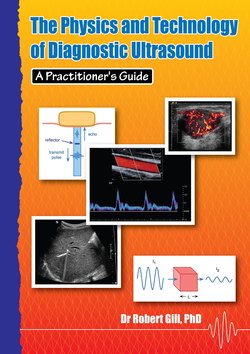Читать книгу The Physics and Technology of Diagnostic Ultrasound: A Practitioner's Guide - Robert Gill - Страница 31
На сайте Литреса книга снята с продажи.
Pulse repetition frequency limitations
ОглавлениеWe saw at the end of the previous section that real-time scanning requires the ultrasound machine to create images as quickly as possible. We will now see how the time taken for ultrasound to travel in the tissues limits the rate of imaging. This occurs because of a fundamental rule that the ultrasound machine must obey (see Figure 3.8):
The machine must not transmit again until all detectable echoes caused by the previous transmit pulse have been received.
If the machine violates this rule, echoes from the new transmit pulse will overlap with the echoes from the previous pulse and an artifact known as "range ambiguity" will occur. We will consider this in more detail in chapter 8.
Figure 3.8 The voltage seen on the transducer as a function of time. The first transmit pulse is followed by a series of echoes (only three are shown here for simplicity), diminishing in amplitude until they become undetectable. The time from the transmit pulse to the last detectable echo is tp. The next pulse can only be transmitted after this time.
Now consider a probe which penetrates to a depth P. (Reminder: this means that echoes from structures at depths greater than P are not detectable.) Since we know the relationship between depth and echo arrival time, we can calculate when the last detectable echo will be received.
The time delay between the transmit pulse and the last detectable echo (tp) is given by:
Given the rule cited above, this will be the shortest allowable time between one transmit pulse and the next. It follows therefore that the maximum number of transmit pulses per second will be the reciprocal of this time:
Remember that "Pulse Repetition Frequency" (PRF) means the total number of pulses transmitted each second.
Since the machine generally strives to produce as many images each second as possible, it will make an estimate of the depth of penetration P (taking into account the ultrasound frequency being used) and then it will use the maximum PRF consistent with that depth of penetration.
The above relationship between the maximum allowable PRF and the depth of penetration is an inverse one. Thus, if the depth of penetration is small (e.g. in a carotid artery scan) a high PRF can be used and so the frame rate will also be high. Conversely, we can see that having a large depth of penetration (as generally required in an abdominal scan, for example) will force the machine to use a relatively low PRF and so decrease the rate of imaging.
